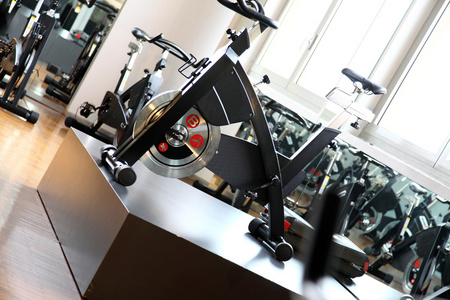indoor cycling benefits and disadvantages

Indoor cycling, like any form of exercise, has its benefits and potential disadvantages. Let's explore both:
Benefits of Indoor Cycling:
Cardiovascular Fitness: Indoor cycling is an excellent cardiovascular exercise that improves heart health, enhances lung capacity, and increases overall cardiovascular endurance.
Weight Management: Indoor cycling can contribute to weight loss and weight management by burning calories and creating a calorie deficit when combined with a balanced diet.
Low-Impact: Indoor cycling is a low-impact exercise that puts minimal stress on the joints, making it suitable for individuals with joint issues or those seeking a gentler form of exercise.
Leg Strength and Muscle Tone: Cycling primarily targets the muscles of the lower body, such as the quadriceps, hamstrings, calves, and glutes. Regular indoor cycling can help strengthen and tone these muscles, improving leg strength and muscle definition.
Convenience: Indoor cycling provides the convenience of exercising in a controlled environment regardless of weather conditions, making it accessible and convenient for year-round workouts.
Customizable Intensity: Indoor cycling allows you to adjust the resistance level and intensity according to your fitness level and goals. This makes it suitable for individuals of different fitness levels, from beginners to advanced athletes.
Disadvantages of Indoor Cycling:
Repetitive Motion: Indoor cycling involves repetitive leg movements, which can potentially lead to overuse injuries if proper form and technique are not maintained, or if there is an excessive amount of training without adequate rest and recovery.
Limited Variety: While indoor cycling can be highly engaging, some individuals may find the repetitive nature of the exercise monotonous over time. Incorporating different workout formats, music, or virtual classes can help add variety to the experience.
Equipment Cost: Indoor cycling typically requires a Stationary bike or access to a cycling studio, which may involve an initial investment or ongoing membership fees. However, there are also budget-friendly options available, such as using a basic stationary bike at home or attending group classes at local gyms.
Lack of Upper Body Engagement: Indoor cycling primarily focuses on the lower body muscles, which means it does not provide as much direct engagement for upper body muscles. However, you can incorporate additional upper body exercises or cross-training activities to address this.
Limited Impact on Bone Density: Indoor cycling is a non-weight-bearing exercise, which means it may not have a significant impact on bone density. Including weight-bearing exercises or strength training in your overall fitness routine can help promote bone health.
It's important to note that the disadvantages mentioned above can often be mitigated through proper training techniques, adequate rest and recovery, and incorporating other forms of exercise into your fitness routine. As with any exercise program, it is recommended to consult with a healthcare professional or fitness instructor to ensure safe and effective participation based on your individual circumstances.
Please indicate the address of this article for reprint https://www.sportshealthprogram.com/Indoor-Cycling-Bikes/202307670.html



















